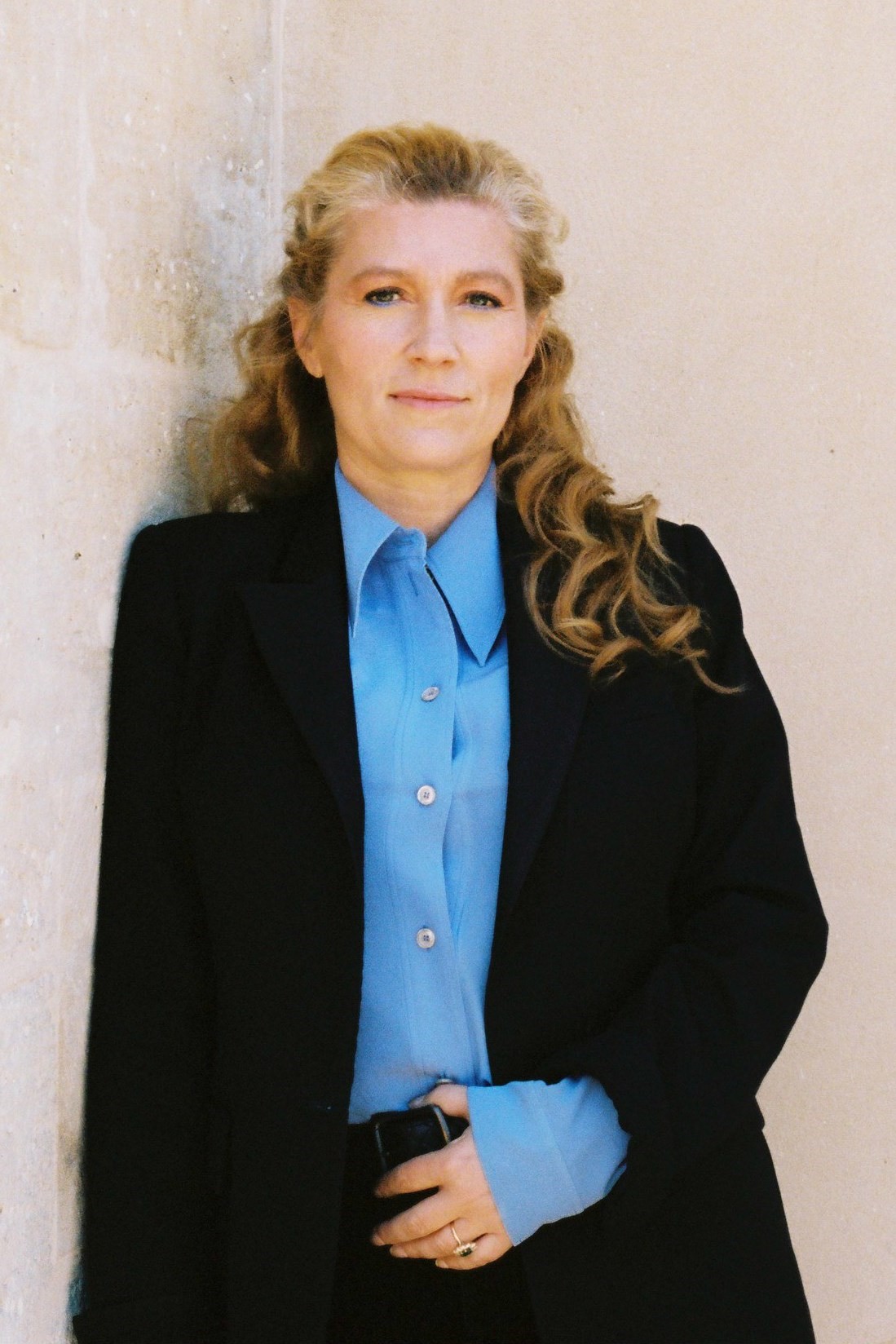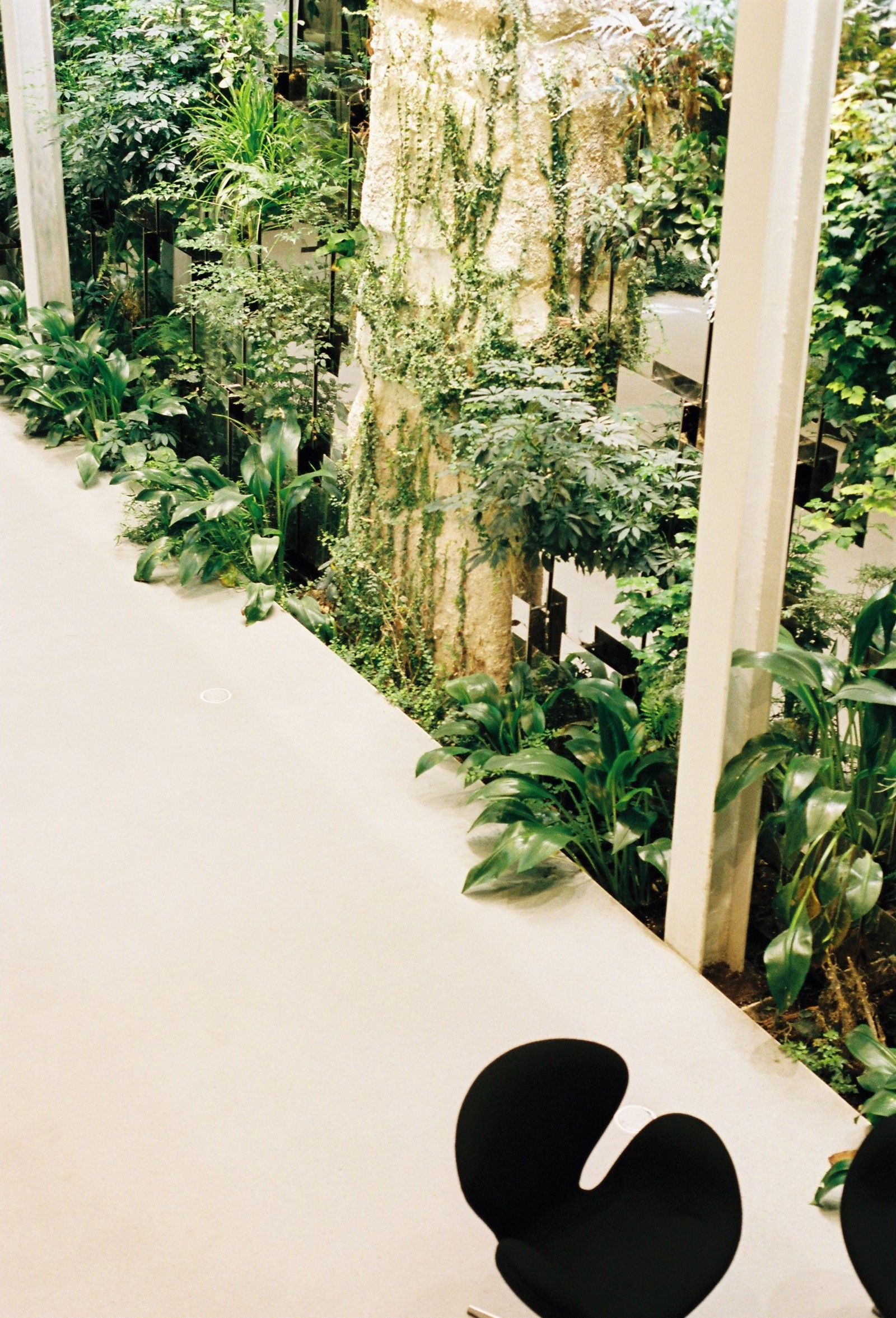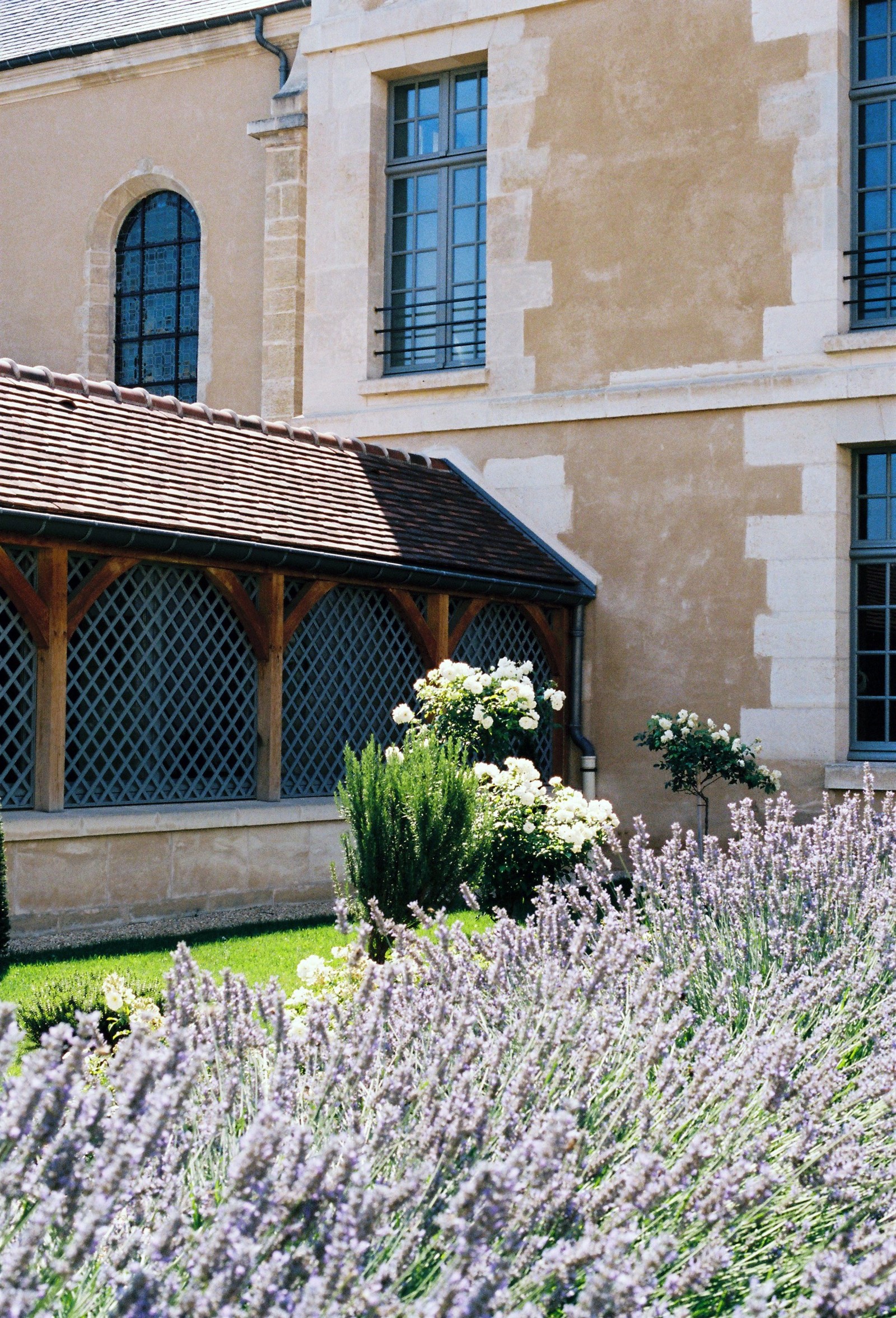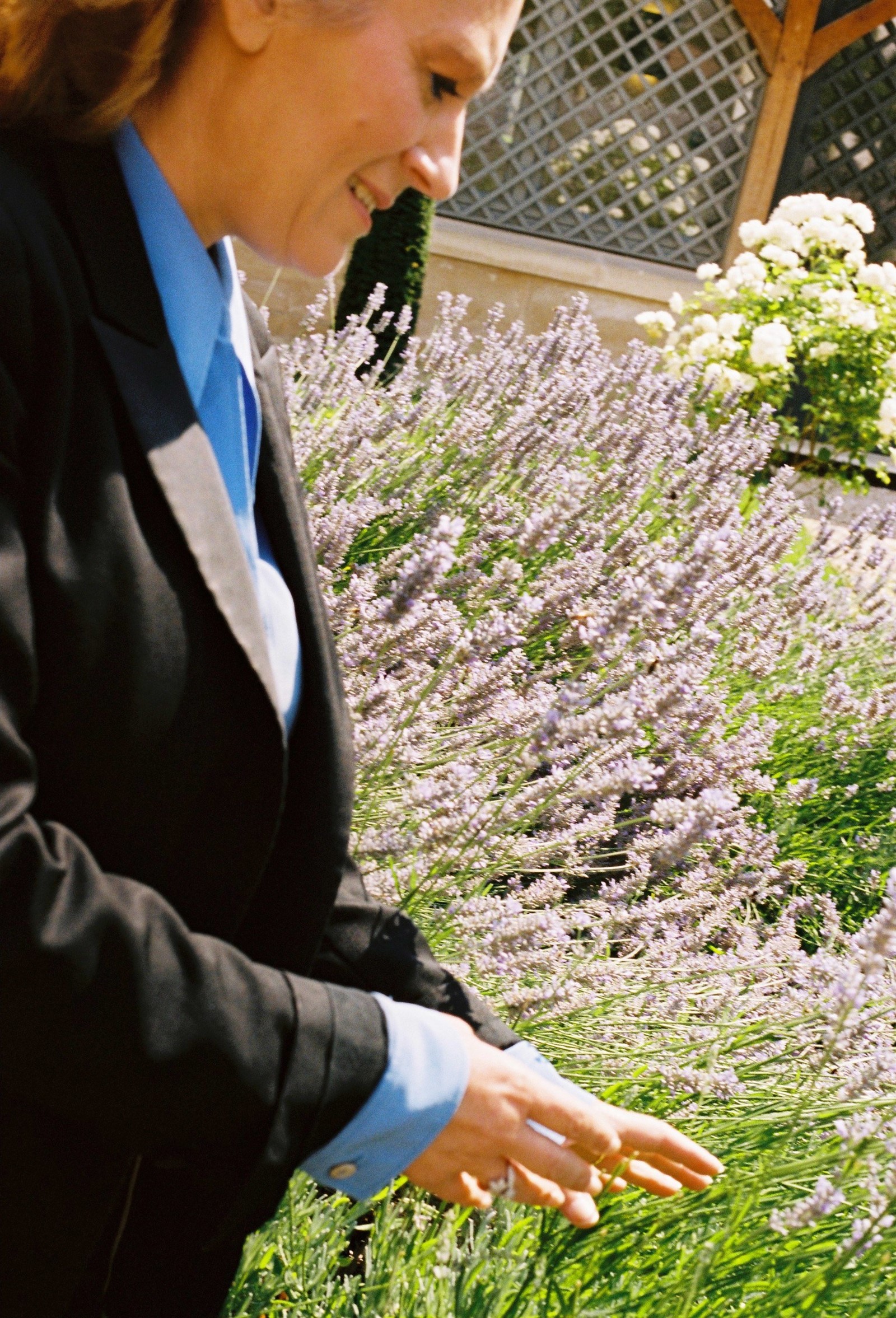During the World Economic Forum in Davos this year, Kering – the luxury conglomerate that owns Balenciaga, Saint Laurent, Brioni and other prestigious labels – was christened the most sustainable textile, apparel and luxury goods company. Kering’s CEO François-Henri Pinault has made forward-thinking strategy on sustainability a priority, and he found an ambitious visionary – with a background in engineering and French politics – to implement the necessary measures: Marie-Claire Daveu.
Before becoming Kering’s chief sustainability officer and head of international institutional affairs in 2012, Daveu was a public servant in the fields of agriculture and environment. The luxury sector is sharply different from her roots, but Daveu wants to move sustainability forward just as ardently: above all, to go past well-intentioned talk and implement effective and concrete actions and procedures.
She speaks with passion, warmly but firmly, about the evolving realities of the industry, seated in her office within Laennec, Kering’s corporate Rive Gauche headquarters in Paris. (Yves Saint Laurent used to live down the street.) The sprawling 17th-century patrimonial property was a functional hospital until 2000; fittingly, it became the first building in France with an HQE certification (a sustainability excellence badge applied to buildings and infrastructure). Here, the ancient stone walls are interspersed with sleek glass offices, and the manicured courtyards contain beehives that produce lavender honey.
Daveu notes: “People started to pay attention to sustainability perhaps first in the food industry, because they make the link with their health. The automotive industry was also very challenged: you also make the link with your health there too.” The issue with the textile industry, she remarks, is that, there’s a less visceral sense of duty: “you don’t imagine the direct link with you”.


But the tide is turning. Social media is doubling as a watchdog, with consumers forcing brand accountability; in a post-COP21 world, the urgency of pivoting away from short-term convenience is rising gradually, and making people consider a more responsible, longterm blueprint for the future. “Sustainability is at the heart of the strategy,” Daveu says of Kering’s internal workings. “When speaking about our products, we speak of heritage and savoir faire. But to pay attention to the planet and to people is also inherent to quality.” Daveu points out that, rather than savoir faire – that favourite term of the French luxury sector – this new methodology is rather about savoir être: a conscientious way of thinking even before anything is crafted.
In 2017, Kering announced targets with quantitative objectives – notably reducing the company’s environmental footprint 40 per cent by 2025 – and put in place KPIs to objectively trace the progress. Having decided to communicate results every three years, the end of 2019 is the next reveal. “We are organising meetings with every brand, with their CEO and the executive committee, linked with this kind of target. We try to have the same approach as with financial results. We say: sustainability is the same level of importance.”
“Sustainability is at the heart of the strategy. When speaking about our products, we speak of heritage and savoir faire. But to pay attention to the planet and to people is also inherent to quality” – Marie-Claire Daveu
Like the certified walls within which it operates, sustainability is a top-down operation. “The most important thing is to change the way of thinking,” Daveu insists. “But you won’t be able to do it if the top management isn’t involved.” At Kering, she says, “we have sustainability at every level in our governance. You need to have sustainability at the strategic level, and on the ground” – there are full-time teams dedicated exclusively to monitoring and facilitating sustainable measures within each and every label – “it has to be everywhere”. The leadership must put their money where their mouth is, so to speak: part of their bonuses – ten per cent – are linked with sustainability performance. “Classical business results are important, but it’s not enough. You have to have results in the field of sustainability.”
The future can only be altered with proactive steps: weaving sustainable practices and techniques throughout Kering’s portfolio of brands, from the raw materials sourced, to their process of manufacture. The means of replacing bad habits with good ones is to reroute the approach from the very conception of a collection. How to direct such diverse teams – and the aesthetics that go with them – to follow the same operatives? The group target is the same for everyone – reduce by 40 per cent – but specific regimens are tailored to tackle the impact each label has, linked with the business they are doing. “The topic won’t be the same if you are Gucci and Boucheron,” Daveu says. It starts with pilot projects: a tanning process without heavy metals becomes implemented in tanneries; Mongolian cashmere is developed with attention to animal welfare, to the ecosystem, to herders and their health, safety, and salary.


It’s hard to change a system when so much is already in place. Therefore: “It’s important to have the designer involved in this journey,” Daveu emphasises. “It’s easier to include sustainability when it starts at the beginning of the process. If I develop my product, have chosen my raw material, and ask myself, ‘Oh, is it sustainable or not?’ Of course it’s more complex. So that’s why it’s key to educate and to train not only the designer and design team, but also people who are in the supply chain – people in the industry from all sides, to really think: what can I do to reduce my environmental footprint? Do I know where the raw materials are coming from, and which kind of process I will use?” It’s about rethinking the standards, providing tools to apply them – and then openly sharing discoveries to motivate innovation throughout the industry.
Indeed, Kering provides a major assist: the Materials Innovation Lab, in Novara near Milan, is a rich resource. The hub functions as a library, with over 3,000 sustainable fabrics for reference, as well as a locus for dialogue between design teams and technical professionals. Here, there are not only sustainable silks and cottons but newly developed raw materials offered by suppliers (a recent one was made from fishing net fibres). In the future, the same expectations will apply for watches and jewellery, and notably processes that remove lead from enamel.
“It’s important to have the designer involved in this journey. It’s easier to include sustainability when it starts at the beginning of the process” – Marie-Claire Daveu
“To put into scale, if we want to reduce by 40 per cent, we need innovation – and we need disruptive innovation,” Daveu says. “If you don’t have the solutions, that’s where you put in place cross-fertilisation with universities, NGOs, and other industries.” Kering has invested in Worn Again Technologies, which found ways to extract fibres of cellulose and polyester from old textiles and recycle them into entirely new fibres. More recently, there has been a partnership with Amsterdam-based incubator Fashion For Good Plug and Play, dedicated to experimental sustainability: leather made from mushrooms, tanning processes spurred by microorganisms, fibres made from recycled fruit skins. With these start-ups, there’s a great sense of possibility, if underpinned by slight uncertainty. “It’s a question of needing time to develop,” Daveu acknowledges. “With the luxury sector, you have to be sure the products you will put on the market really have the same standard. It’s great to have the process; it’s great to have the innovation; it’s great that it works economically – but you have to be sure that, for your consumers, it will really be the highest criteria of quality.” The lifespan of a product in luxury is predicated on longevity: the hefty price tag is based, in part, upon that sense of down-the-line investment. “The use is not the same as for a fashion product. If you are buying a luxury bag, it’s not to have it one month. You want to give your Bottega Veneta bag to your daughter,” Daveu noted. “We have this notion of rareté.”
Ultimately, “you don’t have all the positive answers to your questions,” Daveu reasons. “You have to push people to understand that to have results in sustainability, you need time.” She admits that, given the breakneck pace that designers are forced to work at, “I don’t think the rhythm of our industry will change; it’s really with the culture”.
An essential component of that potential for change is through education. Reframing the modus operandi is an essential way to cement good practices (“not only in our industry, but for citizens,” Daveu notes). There have been partnerships with the London College of Fashion and Beijing’s Tsinghua University; moreover, in February, Kering created a MOOC: “Fashion and Sustainability: Understanding Luxury Fashion in a Changing World”. It’s in English; a Chinese adaptation is forthcoming. “Fashion is a global industry worth $2.4 trillion, employing around 50 million people, and is said to be one of the world’s most polluting industries,” the description bleakly points out.


Other companies may be waking up to these unacceptable statistics, but often oversell their ambitions to change with marketing buzzwords rather than concrete imperatives. “Greenwashing is very dangerous,” Daveu cautions. “Beyond the ethical side, from a risk management approach, it could be very dangerous for a group or brand. If you say you are doing something, it’s better, really, to do it.”
She distinguishes: “It’s not because you are really engaged that you are perfect.” Kering’s commitment is authentic – “but sustainability is a long journey,” Daveu says. “What’s key is to deliver concrete results; after that, you have to share your difficulties and your failures.” Accountability is essential – especially when things do not work. “Sometimes it’s because you didn’t do your job very well, but sometimes you didn’t find the technical solutions. It’s important not to try to hide everything, or say everything is perfect. No one, today, can believe everything is perfect.” When alternative solutions to problematic techniques haven’t been found, admitting defeat is not a flaw but a motivator. “The fact that you’re transparent – it’s also a way for you and the organisation to be pushed.”
“Sustainability is a long journey. What’s key is to deliver concrete results; after that, you have to share your difficulties and your failures” – Marie-Claire Daveu
Customers are increasingly sensitive to issues of sustainability. “When you think about the millennial generation… of course, things will change. They are transforming the way they consume, the fact that digital is more and more important. If they ask questions on their side, we can imagine they will change these topics within our industry.” She sums it up candidly: “We have to show that sustainability is key for our industry: we can earn some money while having a strong commitment and strong policies.”
Luxury has always set the trends that trickle down through the rest of the fashion macrocosm, but this entrepreneurial and ethical imperative of sustainability is much more critical than the trendiest silhouette. Daveu has hope that a new generation will see this through, in industries beyond luxury. The uneasy reality is: “We don’t have so much time to really change the paradigm.”
